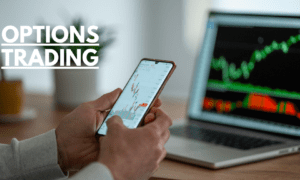In today’s volatile global economy, investors are constantly searching for stability. Market turbulence, inflation, political instability, and unpredictable events like global pandemics have created an environment where traditional assets often fail to provide the security investors crave. This is where safe-haven investments emerge as a critical strategy, offering a reliable refuge during uncertain times.
As we look toward the future, the role of safe-haven assets will only become more significant. Let’s explore the evolving landscape of these investments, the factors driving their demand, and how they fit into a modern investment portfolio.
Understanding Safe-Haven Investments
A safe-haven investment is an asset that retains or increases in value during times of economic distress or market volatility. Unlike riskier instruments, these assets provide a cushion against losses, protecting both institutional and retail investors from financial shocks.
Historically, safe-haven assets have included:
- Precious metals like gold and silver
- Stable government bonds
- Defensive stocks in essential industries
- Cash reserves and currencies such as the U.S. dollar or Swiss franc
- Real estate in stable markets
For a deeper overview, Investopedia explains safe-haven investments in detail, highlighting why they remain essential during financial turbulence.
Why Safe-Haven Assets Are More Important Than Ever
The 21st century has already experienced multiple disruptions — from the 2008 financial crisis to the COVID-19 pandemic and ongoing geopolitical conflicts. Each event has highlighted the importance of wealth protection strategies.
Key reasons investors turn to safe-haven investments include:
- Protection Against Inflation: Rising inflation erodes the value of cash and fixed-income returns, pushing investors toward tangible assets.
- Geopolitical Instability: Wars, trade tensions, and political uncertainty weaken stock markets but often strengthen safe-haven demand.
- Market Corrections: Equity markets are prone to cycles of growth and decline, but safe-haven assets offer counterbalance during downturns.
- Currency Fluctuations: In times of currency weakness, safe-haven investments offer a stable alternative.
According to the International Monetary Fund (IMF), financial shocks are becoming more frequent and widespread, further reinforcing the need for reliable safe-haven strategies.
Precious Metals: A Timeless Shield
Among all safe-haven investments, precious metals such as gold as a safe-haven asset have stood the test of time. Gold has been viewed as a store of value for centuries, maintaining its appeal across civilizations. Its finite supply and universal acceptance make it a powerful hedge against both inflation and market uncertainty.
Silver, platinum, and palladium are also gaining traction as investors seek diversification within the precious metals category. However, gold remains the most trusted safe-haven asset globally due to its liquidity and enduring cultural significance.
Government Bonds: The Backbone of Stability
Sovereign bonds, particularly U.S. Treasury securities, remain a cornerstone of safe-haven investing. These bonds are backed by the full faith and credit of governments, making them among the least risky assets available.
Although low interest rates in recent years have reduced yields, the stability they offer continues to attract conservative investors. As central banks adjust monetary policies, government bonds will remain an essential part of diversified safe-haven strategies.
Defensive Stocks and Stable Sectors
Not all equities are vulnerable to market shocks. Defensive stocks in industries like utilities, healthcare, and consumer staples often provide steady dividends and resilience during downturns. While they may not offer explosive growth, their reliability during crises makes them a valuable addition to a safe-haven portfolio.
Currencies and Cash Reserves
Investors also flock to strong currencies during instability. The U.S. dollar and Swiss franc have long been viewed as reliable safe-haven currencies. Holding cash reserves provides flexibility, allowing investors to quickly take advantage of new opportunities when markets stabilize.
Real Estate as a Defensive Asset
Real estate, particularly in stable and developed markets, serves as a long-term safe-haven investment. Physical property not only offers the potential for rental income but also preserves capital value over time. In periods of inflation, real estate values often rise, providing a natural hedge.
The Rise of Alternative Safe-Haven Assets
The investment world is evolving, and with it, new categories of safe-haven assets are emerging. Cryptocurrencies like Bitcoin have been touted by some as digital safe-havens, though their volatility raises questions about long-term reliability. Similarly, commodities such as agricultural products and energy resources are being reevaluated for their defensive potential.
Forbes also notes that investors are increasingly turning to digital and alternative assets as part of their defensive strategies, even though these remain experimental compared to traditional options.
The Future of Safe-Haven Investments
As global challenges intensify, the future of safe-haven investing will be shaped by several factors:
- Geopolitical Shifts: Increasing instability will drive investors to diversify across multiple safe-haven categories.
- Technological Disruption: Digital assets may eventually play a greater role in safe-haven strategies, though adoption will be gradual.
- Climate and Sustainability Concerns: Green investments and sustainable commodities could emerge as new defensive categories.
- Central Bank Policies: Decisions on interest rates and monetary supply will continue to influence safe-haven demand.
The future will not be about relying on a single safe-haven asset, but about strategically blending multiple defensive investments to protect wealth in an unpredictable world.
Building a Diversified Safe-Haven Portfolio
For modern investors, the best strategy involves combining traditional and emerging safe-haven assets. A balanced portfolio might include:
- Gold and other precious metals
- Government bonds for steady security
- Defensive stocks for income stability
- Cash reserves for liquidity
- Real estate for long-term growth potential
By carefully aligning these assets, investors can safeguard their wealth while maintaining flexibility to adapt to changing market conditions.
Conclusion
The future of safe-haven investments lies in adaptability, diversification, and foresight. As markets become more unpredictable, investors must prepare by building robust portfolios that can withstand turbulence. By embracing both traditional and modern defensive strategies, it is possible to achieve stability and growth even in the most volatile times.





























